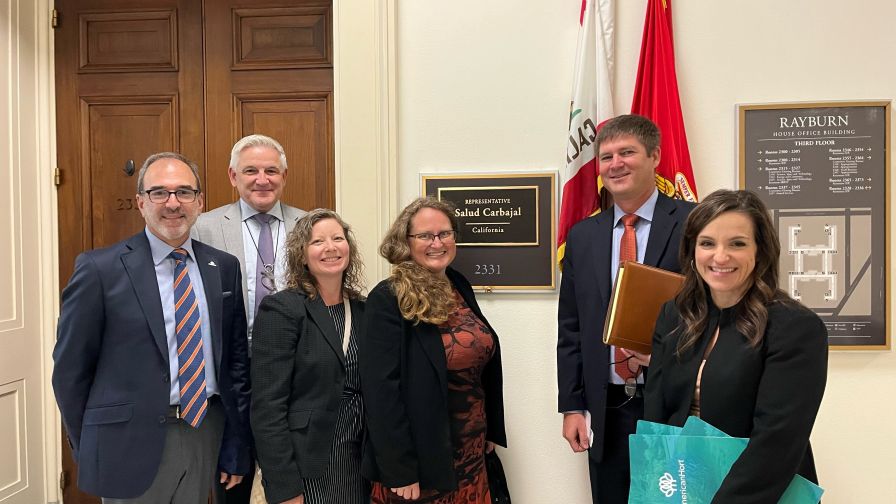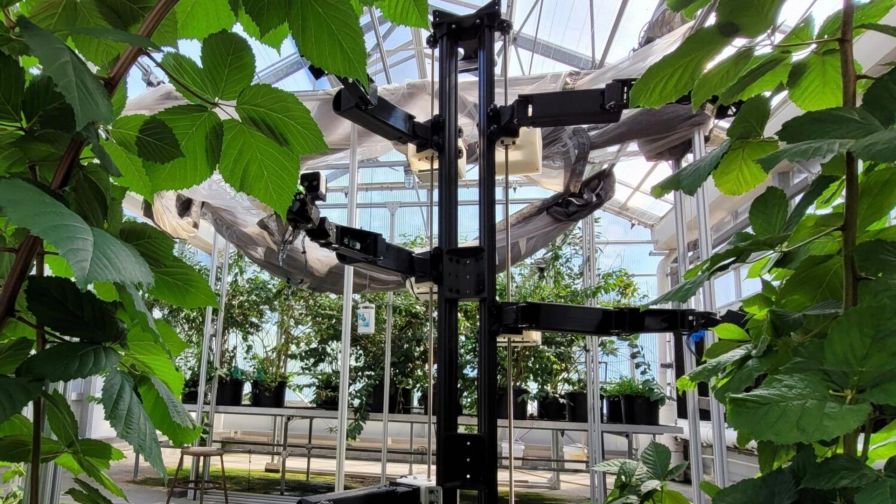Why the Next Farm Bill Matters to the Horticulture Industry

Recent Farm Bill funding led to a $4 million grant led by Dr. Chuan Hong, Virginia Tech, aimed at safeguarding boxwood — the nation’s #1 evergreen ornamental shrub crop — from boxwood blight disease.
The upcoming new year marks the return of a tradition we waited four years to experience. No, not the games of the Winter Olympiad. In 2022, the House and Senate Committees on Agriculture will kick off the extensive process of updating the Farm Bill.
For the uninitiated, the Farm Bill is a multi-year law to address agriculture and food policy, which Congress typically re-evaluates and renews every five years. Comprised of 12 titles that detail programs ranging from nutrition assistance to agriculture research, the Farm Bill promotes home-grown food, fiber, fuel, and flora for domestic consumption and export to markets abroad.
The legislation’s historical roots span 18 farm bills and date back to the New Deal in 1933. However, much has changed in farm policy since the Great Depression and the Dust Bowl. The price control and supply management schemes that dominated the first farm bill evolved over time into risk management programs (e.g., crop insurance), which growers pay into during the good years for the safety net it provides in bad years. Although every Farm Bill touched upon specialty crop production in some manner, support for the sector greatly expanded in 2008 with the addition of a dedicated horticulture title.
Title X, the “Horticulture Title,” of the Farm Bill, authorizes programs to promote cultivation, marketing, and consumption of specialty crops, including nursery and floriculture crops. Two key programs that AmericanHort advocates for within the title include the Specialty Crop Block Grant (SCBG) program, for which the 2018 Farm Bill set aside $85 million annually, and the Specialty Crop Research Initiative (SCRI), which receives $100 million annually under the most recent law.
The SCBG program supports funding to State Departments of Agriculture, which in turn award grants to enhance the competitiveness of specialty crops through research and market development initiatives. For example, in fiscal year 2021, the New York State Department of Agriculture and Markets funded a greenhouse energy efficiency demonstration project by the Cornell Cooperative Extension, which will deploy advanced lighting control systems at eight greenhouses in the state and report out energy savings and increased profitability over the course of 12 months.
Meanwhile, the SCRI program funds research and Extension activities critical to the horticulture industry. The program primarily supports work in five areas:
- Improving crop characteristics through breeding, genetics, genomics, and other methods
- Identification and mitigation of threats from pests and diseases
- Improving producers’ productivity, efficiency, and profitability
- Research and development of new and innovative technology
- Developing methods to improve food safety.
AmericanHort and our foundation, the Horticultural Research Institute (HRI), support a number of SCRI grants each year. One notable project funded recently was a $5 million grant led by Dr. Marc Van Iersel, University of Georgia, for research and outreach on maximizing profits through improved lighting systems used in controlled environmental agriculture. Another was a $4 million grant led by Dr. Chuan Hong, Virginia Tech, aimed at safeguarding boxwood — the nation’s #1 evergreen ornamental shrub crop — from boxwood blight disease. Among the list of 21 projects funded to the tune of $74 million in fiscal year 2021, two were strongly supported by HRI and AmericanHort:
- A $7.5 million grant led by Dr. Chris Ranger, USDA-ARS, and a multi-disciplinary team to develop management strategies for the ambrosia beetle and reduce the vulnerability of Eastern U.S. nursery and orchard crops to devastating infestations
- A $49,958 planning grant led by Dr. Grant Thompson with Iowa State University to develop a larger project proposal to develop actionable opportunities for increasing tree diversity in urban, public spaces.
AmericanHort provided letters of support to both grant applications earlier this year, and we expect HRI will serve in an advisory capacity for both projects.
The extramural research programs within the Farm Bill’s Horticulture Title by design complement nonfederal research investment. Therefore, organizations like HRI play a critical role to identify high priority research and pledge initial investment, which researchers often leverage to compete for additional USDA funds. Similarly, when we advocate on Capitol Hill for increased investment in the Farm Bill’s agriculture research programs, as well as the distinct Floriculture and Nursery Research Initiative, HRI funding serves as an example of our industry putting skin in the game before requesting public support.
Throughout Congress’ deliberative process leading to the Farm Bill renewal, the AmericanHort advocacy team will share with lawmakers the practical benefits of the legislation’s research programs using real-world examples like the projects described earlier. We will also leverage our grassroots strength to help tell our story and shape the legislative product. Our ultimate success depends on your support, and we look forward to partnering with you as we engage with Congress on the Farm Bill.











